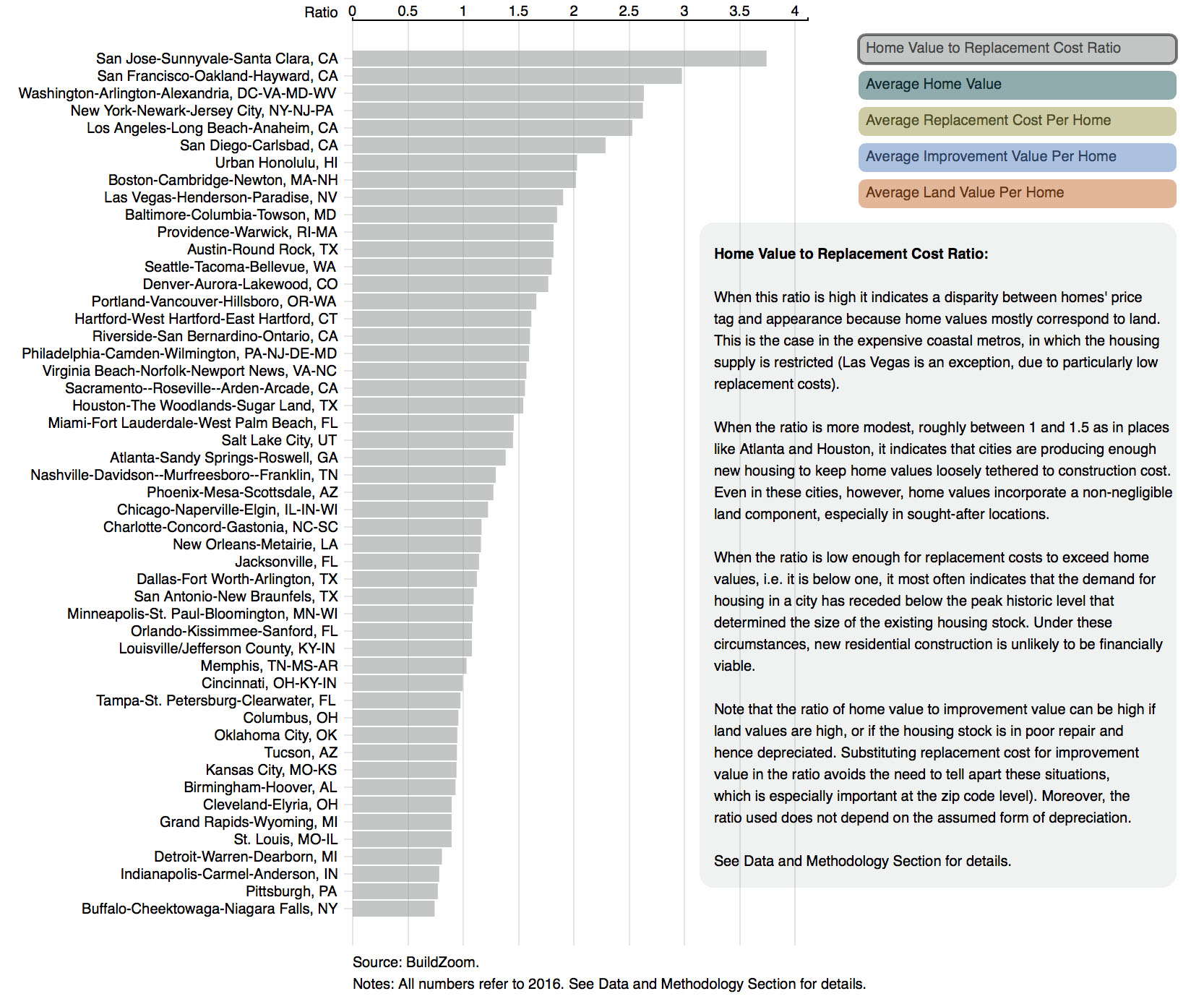We have often discussed on this blog that one of the key disruptions of emerging technologies will be land values.
As AVs and ride-sharing becomes more prevalent we will tend to have an increase in land supply (reduced parking needs will free up land used for parking – today’s largest single land use in most US cities, while increased ease of travel will expand metropolitan footprints and land at the periphery will now become viable for development). As E-Commerce continues to grow we will continue to see store closings and a reduction of commercial development – already being felt today – and hence an increase in available land supply. Basic economic theory tells us that if we end up increasing land supply – both in central cities and in the periphery – land values should go down.
With this, the question is how much of an impact will this reduction in land values have on overall property values – or ‘how much of my property’s value is the land and how much is the building?’. A recent analysis by Issi Romem tackles this question by plotting the building replacement value and land value in major metro areas throughout the country.
The findings are sobering. In growing coastal cities, the land value is more than 3.5 times the building replacement value and the vast majority of properties in these metro areas having the land value exceed the building replacement value. What this means is that changes to land values will drastically alter overall project values. If the impacts we describe above come to fruition, we will see large disruptions to overall real estate value throughout the country. Take a look at the article to see maps of different metro areas to see how this differentiates itself within metro areas. Not surprisingly, the areas closest in are the most affected – and by factors of up to 5 times the home replacement value.
This could be a boon for the affordability of housing – especially in areas closer into central cities where accessibility to jobs and services is easiest (under current transportation systems…), but it will be a large disrupter in the overall real estate market and could put many current homeowners underwater.


